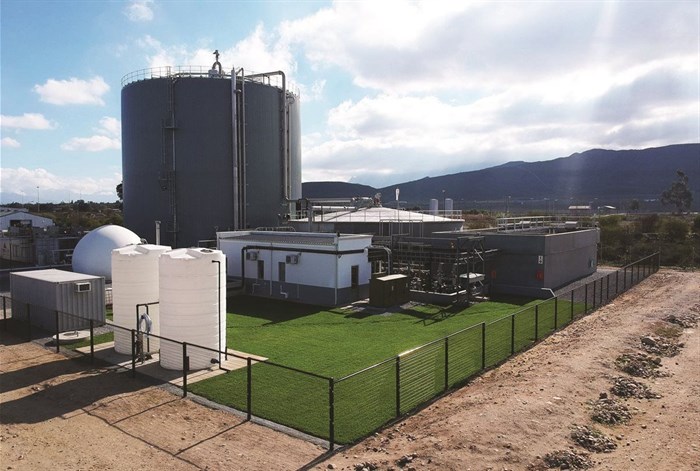With energy costs rising and organic waste coming to the fore as a readily available renewable energy source, major food producers are seeing the benefit of implementing waste-to-energy solutions to reduce their dependence on the grid.
Hundreds of tonnes of chicken manure and post-processing organic 'waste' are produced each day - along with millions of litres of energy-rich wastewater sludge. To extract value from this mountain of waste, poultry farms typically compost their chicken litter, and chicken processors render down their organic waste to create raw materials for animal feed. But value gets lost in the process, and 'cleaning' the wastewater sludge can be energy- and chemical-intensive.
With energy costs rising and organic waste coming to the fore as a readily available renewable energy source, major food producers are seeing the benefit of implementing waste-to-energy solutions to reduce their dependence on the grid. As part of its sustainable business drive, RCL Foods has invested in creating different forms of value from waste – most importantly, given the current energy crisis, using chicken waste to generate electricity.

According to Mark Swilling, professor of sustainable development at Stellenbosch University’s School of Public Leadership, South Africa cannot expect a sustainable economic recovery as long as load shedding persists. With renewable energy already part of the country’s planned energy mix, and Swilling and others calling for this to be fast-tracked to avert permanent load shedding by 2025, the case for investing in onsite electricity self-generation has never been stronger.
In his State of the Nation address prior to the Covid-19 lockdown, President Cyril Ramaphosa indicated several measures being taken to rapidly and significantly increase generation capacity outside of Eskom. These included continuing to register small-scale distributed generation of less than one megawatt (MW) for own use (no licence required) and ensuring that all applications by commercial and industrial users to produce more than 1MW of electricity for their own use are processed within the prescribed 120 days.
A Section 34 Determination published by the Department of Mineral Resources and Energy in September, saw provision being made for 6.8 gigawatts (GW) of renewables, 3GW of gas and 1.5GW of coal to be brought onto the grid.
Self-generation includes solar photovoltaic (PV) systems, wind, biomass and biogas. While the cap on onsite self-generation currently remains, the availability of 'green' development finance and declining costs make investing in own-generated electricity more feasible for energy consumers.
John du Plessis, supply chain and sustainability director at RCL Foods, says: "Generating your own electricity can significantly improve self-sufficiency in times of load shedding, save on energy costs, and provide income from selling excess power into the national grid. That a greater proportion of renewables will also reduce greenhouse gas emissions goes without saying."
While solar projects are a growing contributor to the business’s self-sufficiency ambition, its biomass and biogas projects currently lead its renewable generation output, making it almost 50% electricity self-sufficient.
Du Plessis explains that biomass (in the form of bagasse, a by-product of sugar processing) is used to generate upwards of 95% of the electricity required by the Malalane and Komati sugar mills in Mpumalanga, while power is also exported through the Eskom grid to the Coega Industrial Development Zone in the Eastern Cape.
At the business’ Worcester and Rustenburg chicken processing facilities, waste-to-value plants have been constructed that produce biogas from organic waste, using the biological process of anaerobic digestion. This is then used to generate electricity, hot water and steam – while also producing enough clean water to meet all non-food and non-feed-contact purposes on site. In Worcester, a daily 3,000-kilolitre wastewater sludge 'headache' is now effectively powering 30% of the site, while providing enough steam to reduce coal consumption by up to 16%.
In Rustenburg, a newly constructed 6MW waste-to-value plant is creating biogas from a daily combination of 1,400 Kl of wastewater sludge and 100 tonnes of chicken litter. Currently ramping up to full capacity, the plant will provide 65% of the electricity needs of the chicken plant and adjacent animal feed mill, 100% of the mill’s steam needs, and all their non-potable water requirements. The remaining by-products are used to create fertiliser, in line with circular economy principles.
Renewable energy generation is fast becoming more accessible for municipal, industrial and even domestic consumers. This is aided by a more conducive policy environment, increasing affordability of components like solar PV panels and battery storage, and the availability of debt finance and other funding solutions for renewable projects.
An example of an innovative win-win solution is Matzonox, RCL Foods’ joint venture with energy experts Green Create, who financed the two waste-to-value projects on a build-own-operate-maintain basis. "By stepping up in the area of self-generation, energy consumers can have a significant impact, not just on the stability of the grid, but on the economic and social recovery of South Africa and our sustainability into the future," says du Plessis.